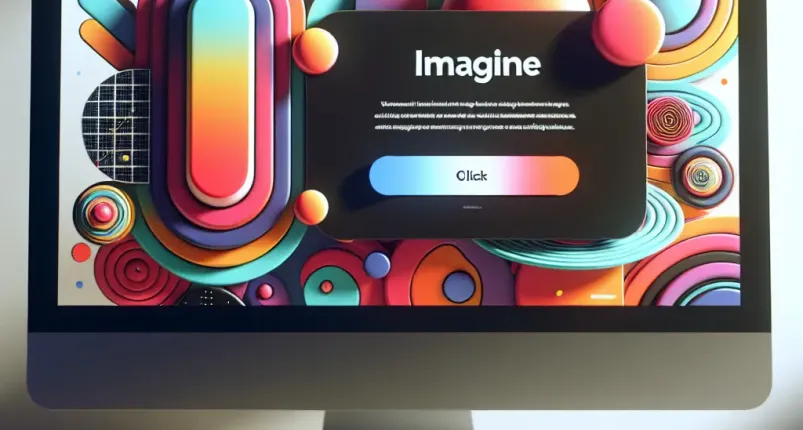
In the fast-paced world of digital marketing, staying ahead of the curve is essential. HTML5 banners have long been a staple of online advertising, offering a flexible and dynamic way to engage audiences across platforms. But as we move into 2024, a key question arises: Should you still use HTML5 banners, or are there better alternatives? This article explores the current landscape, weighing the pros and cons to help you make an informed decision.
What Are HTML5 Banners?
HTML5 banners are rich media ads developed using HTML5, the latest version of the Hypertext Markup Language. Unlike static images or simple text ads, HTML5 banners can incorporate animation, video, and interactive elements, making them more engaging and visually appealing.
The shift from Flash to HTML5, which began in earnest in the mid-2010s, was driven by several factors. Flash was notorious for its security vulnerabilities and lack of support on mobile devices. HTML5, in contrast, offered a more secure, lightweight, and versatile solution that worked seamlessly across desktops, tablets, and smartphones.
The Advantages of Using HTML5 Banners
Despite the rise of various digital advertising formats, HTML5 banners continue to offer several compelling benefits:
- Compatibility: One of the biggest advantages of HTML5 banners is their cross-platform compatibility. Whether your audience is browsing on a smartphone, tablet, or desktop, HTML5 banners can adapt to different screen sizes and resolutions, ensuring a consistent user experience.
- Interactivity: HTML5 banners support interactive elements, such as clickable buttons, expandable menus, and embedded videos. These features can significantly boost user engagement, encouraging viewers to interact with the ad rather than passively scrolling by.
- SEO and Analytics: HTML5 banners can be optimized for search engines, making them more discoverable in relevant searches. Additionally, they offer robust tracking capabilities, allowing marketers to measure performance metrics like impressions, clicks, and conversions.
- Flexibility: Unlike traditional banners, which often require significant re-coding for updates, HTML5 banners are easier to modify. This flexibility means you can quickly update content, such as changing a call-to-action or replacing an image, without needing to start from scratch.
The Challenges of Using HTML5 Banners
However, using HTML5 banners isn't without its challenges:
- Development Complexity: Creating high-quality HTML5 banners often requires skilled developers who are proficient in coding and design. This can increase the cost and time required to produce the banners.
- Browser Support: While HTML5 is widely supported, there can still be issues with how different browsers render the content. Ensuring that your banners look good and function properly across all browsers can be a time-consuming task.
- Ad Blockers: The increasing use of ad blockers poses a challenge for HTML5 banners, as these tools can prevent ads from being displayed. While this is an issue for most digital advertising formats, it’s worth noting when considering your options.
Industry Trends in 2024
As of 2024, HTML5 banners remain a popular choice for many marketers, but the landscape is evolving:
- Current Usage: HTML5 banners are still widely used across industries, particularly for campaigns that require interactive and visually dynamic ads. Their ability to adapt to different devices and screen sizes continues to make them a valuable tool in a marketer’s arsenal.
- Emerging Alternatives: However, new trends are emerging. Video ads, for example, have seen a surge in popularity due to their high engagement rates. Native advertising, which blends ads seamlessly with content, is another trend gaining traction. These alternatives offer different advantages that may complement or even replace HTML5 banners depending on the campaign objectives.
Should You Still Use HTML5 Banners?
So, should you continue using HTML5 banners in 2024? The answer depends on your specific needs and goals.
- Pros and Cons Recap: If your campaign requires cross-platform compatibility, interactivity, and quick updates, HTML5 banners are still a solid choice. They offer a unique blend of flexibility and functionality that can be hard to match.
- Decision-Making Factors: However, if your audience is heavily using platforms where video or native ads perform better, it may be worth exploring these alternatives. Also, consider the potential impact of ad blockers and the technical expertise required to create high-quality HTML5 banners.
Conclusion
In conclusion, HTML5 banners remain a viable option in 2024, particularly for campaigns that benefit from their interactive and flexible nature. However, as with any marketing tool, it’s essential to evaluate them in the context of your broader strategy and the evolving digital landscape. By aligning your banner choice with your campaign goals and audience preferences, you can ensure that your advertising efforts remain effective and relevant.
As you plan your 2024 campaigns, take the time to assess whether HTML5 banners still fit your needs or if it’s time to explore new avenues. Whatever choice you make, staying informed and adaptable is key to success in the ever-changing world of digital marketing.